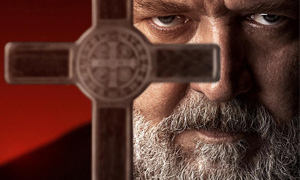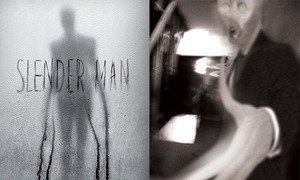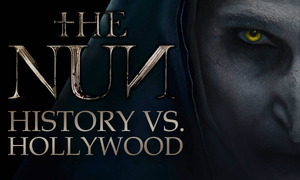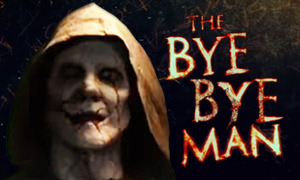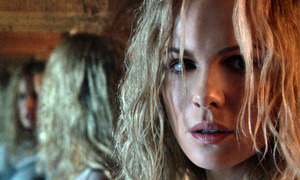What Inspired the Movie "Jaws"?
Is Jaws a true story?
No. Jaws is not a true story. It is based on Peter Benchley's novel of the same name. The Jaws author had a lifelong fascination with sharks and said that he came up with the concept for the novel after reading about a great white shark that had been caught by fisherman Frank Mundus in 1964 (pictured below). Benchley references the incident in the introduction to his book, "...in 1964, I read an item in a newspaper about a fisherman who harpooned a 4,500-pound great white shark off Long Island. I remember thinking at the time, Lord! What would happen if one of those monsters came into a resort community and wouldn't go away? I tucked the item into my wallet and, for the time being, forgot about it." Robert Shaw's character Quint was inspired by Frank Mundus, a shark hunter who became a shark conservationist later in life.
Author Peter Benchley's inspiration for Jaws can also be traced back to his youth, when he took part in family swordfishing expeditions off Nantucket. "We couldn't find any swordfish," said Benchley, "but the ocean was littered with sharks, so we started catching them." -People Magazine
Is Quint's speech about the USS Indianapolis historically accurate?
Steven Spielberg has cited Robert Shaw's Indianapolis speech in Jaws as being the most powerful scene in the movie. More impressive than Shaw's delivery is the fact that the speech is nearly all true. Returning from a top-secret mission to deliver parts for the Hiroshima atomic bomb (dubbed Little Boy) to Tinian Island, the ship was struck in the side by two torpedoes from a Japanese submarine. Like Quint says, it sunk in just 12 minutes. Of the 1,196 men aboard, approximately 300 men went under with the ship, and roughly 900 struggled to remain alive in shark-infested waters (dehydration, saltwater poisoning, exposure, and injuries sustained on the ship were also threats). With few lifeboats, the men were subjected to ongoing attacks by sharks (the frequency of the attacks and the number of men killed by sharks has been the subject of debate).
After fours days and five nights in the water, a bomber on an anti-submarine patrol spotted the oil slick and the survivors by accident. As Quint (Robert Shaw) states in the movie Jaws, only 317 men survived, making it the worst disaster in the history of the U.S. Navy. The part of the speech where he talks about bumping into his friend "Herbie Robinson from Cleveland," whose bobbing body had been bitten in half below the waist, is fiction. There was no one named Herbie Robinson on board the Indianapolis. However, survivors like Marine guard Edgar Harrell described making nearly identical gruesome discoveries in the water (The Ohio Valley Military Society).
Was Jaws inspired by the 1916 New Jersey shark attacks?
No, at least not according to Jaws author Peter Benchley, though he was certainly aware of the 1916 attacks (they are mentioned in his novel). Even though Jaws is not based on a true story, respected news outlets often cite the 1916 New Jersey shark attacks as being the main inspiration for the movie. It is believed that this connection began with a September 2001 New York Times article about fears over sharks, when the Times incorrectly stated that the 1916 shark attacks inspired the movie Jaws. A correction was published on September 8, 2001 after Jaws author Peter Benchley clarified the article's assertion as being untrue.
Why do the 1916 Jersey Shore attacks continue to be falsely cited as the main inspiration for Jaws?
Even though Jaws is not based on a true story, most news outlets continue to cite the inspiration for Jaws as being the 1916 Jersey Shore shark attacks, despite the Jaws author denying the claim. There are two main reasons for this. The first is that in the movie, Roy Scheider's character Brody (Amity Island's Chief of Police) urges the mayor to close the beaches, stating, "And there's no limit to what he's gonna do! I mean we've already had three incidents, two people killed inside of a week. And it's gonna happen again, it happened before! The Jersey beach! ... 1916! Five people chewed up on the surf!"
Second, the movie shares a number of similarities with the 1916 shark attacks along the Jersey Shore, which claimed four lives and left a teenager injured. Like in the movie, the first two victims were killed inside of a week. The shark then killed two more people in Matawan Creek, an estuary that connects into Raritan Bay. In the film, the shark kills a man when it swims into a nearby estuary.
The growing panic along the New Jersey Coast was similar to the panic that erupts in the Amity Island area in movie. Armed motorboats patrolled the beaches and shark hunting parties with rifles (pictured below) set out in search of the Jersey Shore shark. They even tried to use dynamite to explode the shark (pictured below, right), though the attempt was unsuccessful. In the movie, Brody, Quint, and Hooper set out to hunt the shark. Brody uses a rifle to shoot a pressurized scuba tank that he shoved into the shark's mouth, causing it to explode.
Was a great white the culprit of the 1916 New Jersey shark attacks?
Some experts believe that the shark was actually a bull shark, not a great white. Taking into account the Matawan Creek bites, bull sharks are much more likely to venture into freshwater rivers and creeks, while great whites usually stick to the ocean. Bull sharks have the unique ability to function normally in salt, fresh, and brackish water. -PeterBenchley.com
However, newspapers at the time reported that New York taxidermist Michael Schleisser and his friend John Murphy caught a young great white shark (pictured below) in a bay not far from the mouth of Matawan Creek. Human bones were reportedly found inside the stomach of the shark, and the man-eater was subsequently put on display in a shop in New York, yielding plenty of revenue for the owner. A museum expert who studied the bones believed that they might have come from a body that had been dead for some time, suggesting that the shark fed on an already dead body of someone who had likely drowned.
It has also been suggested that the taxidermist, Michael Schleisser (pictured below), could have planted the bones in order to claim the reward and fame. Yet, it certainly can't be ruled out that more than one shark could have been to blame, including Schleisser's.
Was Quint based on a real shark hunter?
Yes. Robert Shaw's character Quint was largely based on shark hunter Frank Mundus, who began shark fishing in 1951 off Montauk (Long Island), New York. However, Jaws author Peter Benchley, who passed away in 2006, denied the correlation, most likely for legal reasons. After Frank Mundus caught an estimated 4,500-pound great white in 1964 (the biggest ever caught), his legend as a big-game fisherman grew. Over the next few years, he repeatedly took Peter Benchley out to sea with him. Mundus told The New York Times that Benchley was impressed with the way he harpooned enormous sharks with lines attached to barrels to track them as they swam to exhaustion (a similar scene unfolds in the Jaws movie).
"If he just would have thanked me, my business would have increased," Mundus told the Times. "Everything he wrote was true, except I didn't get eaten by the big shark. I dragged him in." According to Mundus, he had explained every detail of his 1964 catch to Peter Benchley. Mundus even had similar personality traits in common with Quint, but admits that he became friendlier later in life. "I no longer drink two bottles of booze (bourbon) a day, that tended to bend my attitude" (Patch.com).
"I think a lot of what's in Jaws, he could have only known from Frank Mundus, 'cause there are parts in Jaws that come exactly off that day on the boat," says Gerry Mallow, who was on the boat with Mundus on the day of the 1964 great white catch. -Smithsonian Channel
In further addressing his similarities with the character, Mundus stated on his website, "[Quint] knew how to handle the people the same way I did. He also used similar shark fishing techniques based on my methods. The only difference was that I used hand-held harpoons after field-testing harpoon guns and discovering that they didn't work: the dart would pull out after hitting the fish."
Though Frank Mundus didn't receive a dime, he was grateful that star Roy Scheider publicly acknowledged that he was the real Quint in a TV interview. Mundus set another record in 1986 when he caught a 3,427-pound great white with a rod and reel instead of a harpoon.
Could the shark really have pulled Quint's boat backwards?
No, at least not according to the real Quint, shark hunter Frank Mundus. "It was the funniest and the stupidest movie I've ever seen because too many stupid things happened in it. For instance, no shark can pull a boat backwards at a fast speed with a light line and stern cleats that are only held in there by two bolts." -FMundus.com
What's the story behind the Jaws movie poster?
The iconic Jaws movie poster is actually based on the image that was used for the cover of the paperback novel. Both of these images were created by artist Roger Kastel, who also created The Empire Strikes Back poster for the second film in the original Star Wars trilogy (RogerKastel.com). The hardback cover (below) was created by Alex Gotfryd and was the third version he produced. The first version was rejected for its sexual appearance since it featured the open mouth of a shark, which resembled a vagina with teeth (vagina dentata). The second cover was similar to the third but was too plain, including just the title with no shark or swimmer. -The New York Times Magazine
Do great white sharks really eat humans?
Though great whites do attack humans on occasion, they're more likely to bite once and leave, rather than continue to attack. Jaws author and shark conservationist Peter Benchley describes great whites as, "The largest carnivorous fish with the astonishing capacity to assess, in a microsecond of a first bite, the caloric value of potential prey; human beings are too bony to usually bother with, so they often depart after that first bite." If you like to go into the ocean, use that detail as encouragement to stay trim. -PeterBenchley.com
Were real sharks used in the filming of Jaws?
While most fans know that mechanical sharks were used during the filming, the footage of the shark thrashing in the water near the cage was real. In reality, a 4-foot-9 stuntman named Carl Rizzo was hired to be filmed in a smaller cage, so that the real 16-foot great white would look as big as the 25-foot mechanical shark. The little stuntman was filmed in the cage with the shark attacking, but since he was also given a smaller tank, he ran into trouble when he sucked up all the oxygen after just several minutes. -Bio.com
When another attempt was made the next day, the great white's gills got caught in the line that went from the cage to the support boat. It thrashed crazily on top of the cage, giving them spectacular footage of the shark. The only problem was that the stuntman Rizzo, who was supposed to double for Hooper (Richard Dreyfuss), hadn't gotten into the cage yet. As a result, Hooper, who died in the script and novel, was given a new lease on life. The script was then changed to allow Richard Dreyfuss' character to live on. -BostonMagazine.com
Can you really boil shark jaws?
No. According to Frank Mundus, the inspiration for Quint, this part of the movie is a little unrealistic. "I've never boiled shark jaws. If you do, you'll only end up with a bunch of teeth at the bottom of your bucket because the jaw cartilage melts." -Official Frank Mundus Website
Does Jaws author Peter Benchley have a cameo in the movie?
Yes. He plays the part of a TV reporter on the beach on the Fourth of July (pictured below).
Did the movie Jaws result in the killing of more great white sharks?
Yes, at least to a certain degree. "The movie changed everything," said Jaws author Peter Benchley in a 1984 interview. "It put the fear into people in a tangible way. And there was an immediate reaction which I was very upset about. People regarded the killing of a shark as a great macho triumph. And Valerie and Ron Taylor, the great Australian cinematographers and divers called me and said, 'You don't understand what's going on down here. People are going out on these slaughter trips to prove some sort of macho nonsense about themselves. And sharks are being killed left and right, and we are worried that there may be actually an endangerment of some of the species.' That was unfortunate." -Jaws: The True Story (The World About Us)
Jaws Related Videos
Watch a video about the real Quint from Jaws, Frank Mundus. Also view clips and watch the classic Jaws movie trailer.
Link-to-Learn More:
- Official Website of Frank Mundus, the Inspiration for Quint
- Jaws Author Peter Benchley's Official Website
